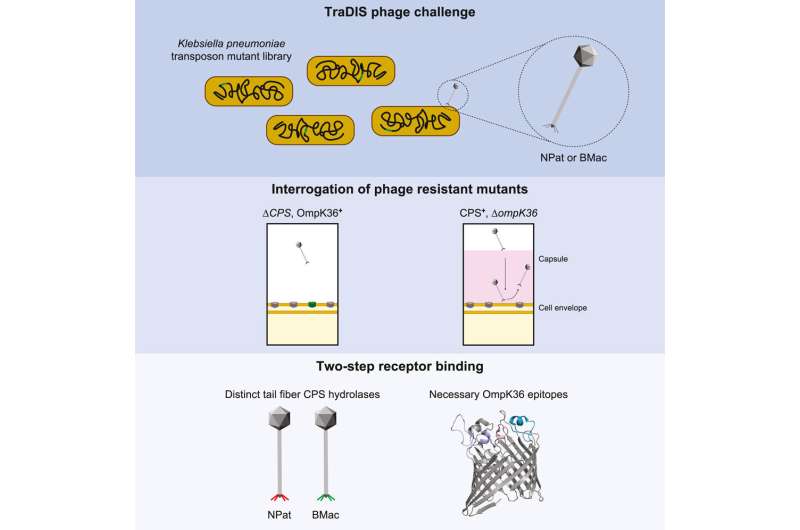This article has been reviewed according to Science X's editorial process and policies. Editors have highlighted the following attributes while ensuring the content's credibility:
fact-checked
peer-reviewed publication
trusted source
proofread
'Bioprospecting' technique uncovers viruses that can kill deadly superbugs

In a modern take on the Victorian gold rush, a Monash University-led project is successfully "bioprospecting" for viruses known as phages that can kill deadly superbugs.
The Monash Biomedicine Discovery Institute (BDI) team, led by Dr. Rhys Dunstan and Professor Trevor Lithgow of the Bacterial Cell Biology Laboratory, has had some success in tracking down the elusive killers.
Published in Cell Reports, their research sheds new light on how phages can select a "superbug" bacterium that they will kill while ignoring other bacteria that are good for our health.
The findings could lead to an improvement in how individual phages are chosen to treat bacterial infections resistant to antibiotics.
Antimicrobial resistance (AMR) is a global issue, with an estimated five million deaths globally in 2019, a number which continues to climb.
Monash University's Center to Impact AMR runs several superbug surveillance programs that are bioprospecting for phages that kill drug-resistant superbugs. They aim to pinpoint phages that can kill specific superbugs and use them to develop treatments.
Bacteriophages are the most abundant biological entities on Earth, with an estimated number that is greater than every other organism, including bacteria, combined. Selecting the right one to treat a given infection is not easy.
In the latest study, Dr. Dunstan surveyed waste-water at Addenbrooke's Hospital in Cambridge, U.K., for phages that can kill a deadly variant of the bacterial superbug Klebsiella pneumoniae.
Klebsiella pneumoniae normally lives in human intestines, where it doesn't cause disease. But if it travels to other parts of the body, it can cause pneumonia, meningitis, urinary tract infections and bloodstream infections.
After analyzing the bacterial features essential for the two phages to infect Klebsiella pneumoniae, Dr. Dunstan's team revealed that the infection process had two essential steps involving two distinct components of the bacterial cell surface.
"Now, this information can be used predictively to know which infections will respond to treatment with these two phages," Dr. Dunstan said.
"One of our aims is to create a biobank of different phages that can kill Klebsiella superbugs. Understanding how these phages kill Klebsiella will allow us to better optimize their use as potential treatments."
More information: Rhys A. Dunstan et al, Epitopes in the capsular polysaccharide and the porin OmpK36 receptors are required for bacteriophage infection of Klebsiella pneumoniae, Cell Reports (2023). DOI: 10.1016/j.celrep.2023.112551
Journal information: Cell Reports
Provided by Monash University




















